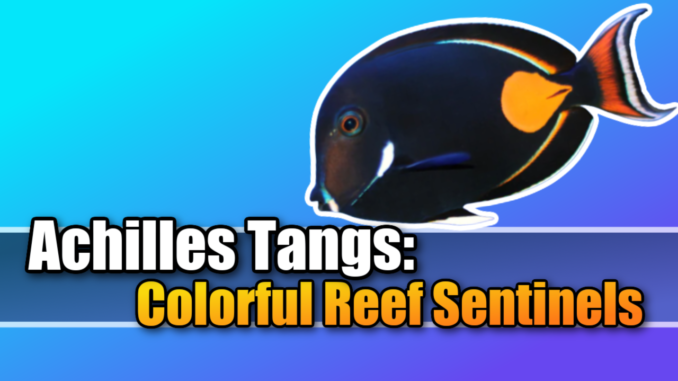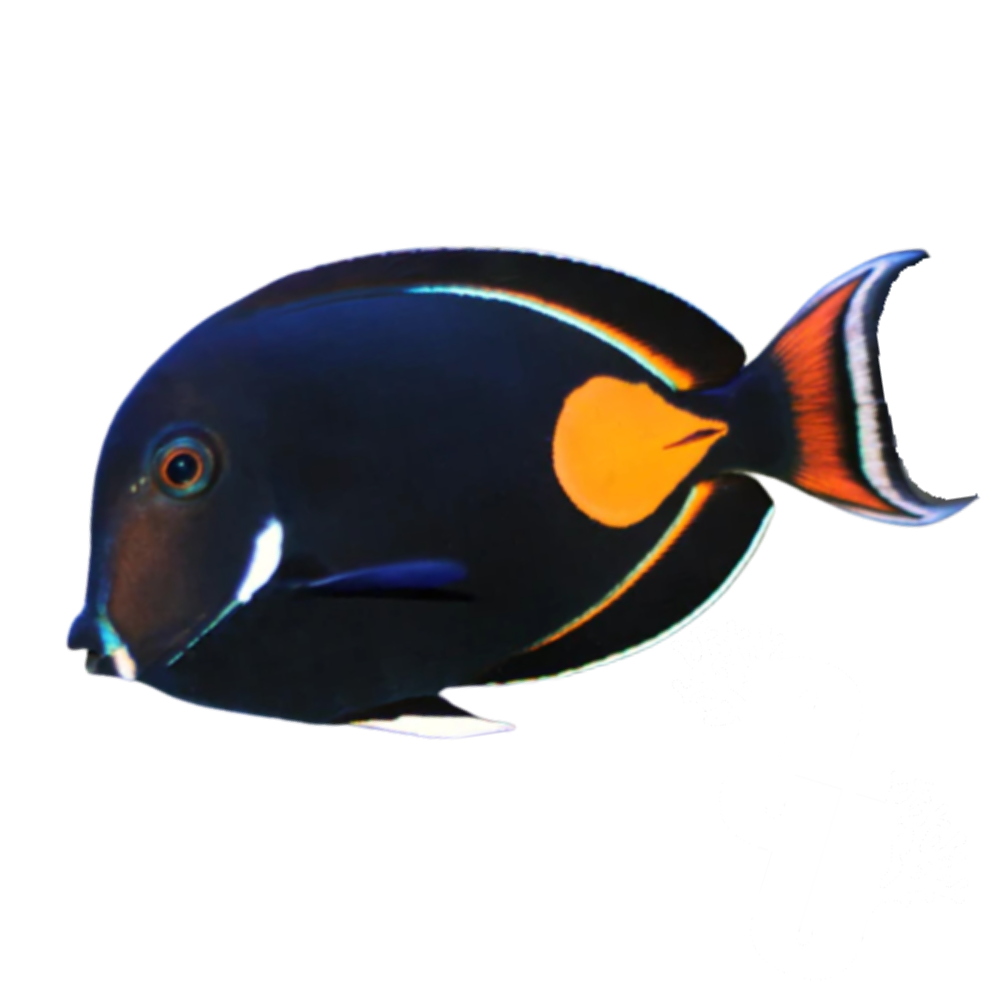
The Achilles Tang, also known as the Red-tailed Surgeonfish or the Achilles Surgeonfish, is a species of marine fish belonging to the family Acanthuridae. Its scientific name is Acanthurus achilles. The Achilles Tang is highly regarded among marine aquarium enthusiasts for its striking appearance and vibrant colors.
Achilles Tangs Care and Other Facts
Appearance: The Achilles Tang has a laterally compressed body with a deep blue coloration. It is named after the distinctive bright orange or red tail fin, which resembles the legendary Achilles’ heel. The tail fin is bordered by a narrow band of black. The fish also has a white vertical band just behind the gill cover, and the face and eyes are marked with shades of blue and black.

Size: In the wild, Achilles Tangs can reach a maximum length of about 10 to 12 inches. However, those kept in aquariums tend to be smaller, usually around 6 to 8 inches.
Distribution: The Achilles Tang is native to the Indo-Pacific region, specifically the coastal areas of the Indian Ocean and the western Pacific Ocean. Its natural range includes regions such as the Maldives, Sri Lanka, Indonesia, the Philippines, and Japan.
Habitat: These fish are commonly found in clear lagoons and coral reefs, where they inhabit rocky or coral-rich areas with ample hiding spots and access to both open water and sheltered caves.
Diet: The Achilles Tang is primarily herbivorous, feeding on various species of algae and other plant matter. In captivity, a diet rich in marine-based seaweed and algae is essential to their well-being. Supplementing their diet with high-quality commercial herbivorous fish foods is also recommended.
Behavior: Like other surgeonfish species, the Achilles Tang possesses a sharp, scalpel-like spine called a “tang” or “scalpel” on both sides of the caudal peduncle, near the tail base. These spines are used for defense and can cause painful injuries if mishandled. Achilles Tangs are generally peaceful but can exhibit territorial behavior, especially towards other surgeonfish species.
Achilles Tangs Aquarium Care
Due to their size and dietary needs, Achilles Tangs require large aquariums with plenty of swimming space and suitable hiding spots. A well-established reef tank with live rock for grazing and hiding is ideal. They prefer stable water conditions with appropriate filtration and regular water changes. It’s important to note that Achilles Tangs can be challenging to keep and require an experienced aquarist.
It’s worth mentioning that the Achilles Tang is a highly sought-after fish in the aquarium trade, which has led to concerns about overfishing and the impact on wild populations. When considering acquiring an Achilles Tang, it’s important to ensure that it is sustainably sourced and obtained from reputable suppliers who follow ethical practices.
Remember, if you are interested in keeping an Achilles Tang or any other marine fish, it is crucial to research their specific care requirements and consult with experienced aquarists or professionals to provide the best possible environment for the fish’s health and well-being.




